
by Deep Green Resistance News Service | Aug 26, 2012 | Colonialism & Conquest, Indigenous Autonomy, Obstruction & Occupation
By J. G. / Deep Green Resistance Great Plains
Women of the Oglala Lakota nation along with activists from Deep Green Resistance, AIM Grassroots, Native Youth Movement, Un-Occupy Albuquerque, Occupy Lincoln, and Rocky Mountain Peace and Justice Center took part in a march from Billy Mills Hall in Pine Ridge into Whiteclay to protest against the predatory liquor industry present there.
Whiteclay has a population of 14, yet 4 liquor stores in the town sell 12,500 cans of beer each day. The stores have been documented repeatedly selling to bootleggers, intoxicated people, minors, and trading beer for sexual favors.
“For over 100 years the women of the Oglala Lakota nation have been dealing with an attack on the mind body and spirit of their relatives”, says Olowan Martinez who is a main organizer of the event and resident of Pine Ridge. “The Oglala have been silenced through chemical warfare waged by the corporations who are out to exploit and make a profit off of the suffering and misery of our people. The time has come to end this suffering by any means necessary.”
Debra White Plume, a Lakota activist and resident of Pine Ridge who spoke at the event proclaimed, “A sober Indian is a dangerous Indian. We have to send a message to Nebraska and its citizens that we are not going to tolerate business as usual. This is the Women’s Day of Peace but that peace will soon be over”.
After the march and speeches members of Deep Green Resistance locked down and blockaded the road into Whiteclay.
Less than a half hour after the lockdown began a police officer rolled down their window and indiscriminately pepper sprayed into a crowd. Up to 12 people were pepper sprayed including the 10 year old son of a Lakota woman who helped organize the march. Also, an elder Lakota woman, Helen Red Feather, reported having her leg hit by a police car in motion. Medics with the protest treated pepper spray injuries.
At 7:39, the five activists who participated in the lock down were hauled off in a horse trailer to the Sheridan County jail in Rushville. They have since been released on their own recognizance.
Today, justice is far from complete, since Whiteclay continues to enable and enact the destruction of the Oglala Lakota and the people of Pine Ridge. The continued subjugation of the Oglala Lakota of the Pine Ridge Reservation will not end as long as the liquor stores in Whiteclay continue to operate.
Chants of “As long as it takes!” began by those locked down and the people standing with them in the crowd at the beginning of the lockdown. The struggle continues.
For context behind the Women’s March and Day of Peace, as well as pictures from the action, please see http://dgrnewsservice.org/2012/08/26/womens-day-of-peace-action-in-white-clay/
Want to help support this action? Please see http://deepgreenresistance.org/feature-help-support-indigenous-solidarity-in-whiteclay/
Para leer este articulo en español, vea: http://dgrnewsservice.org/2012/08/29/la-marcha-de-mujeres-y-el-dia-de-paz-resulto-ser-violente-manifestantes-detenidos/
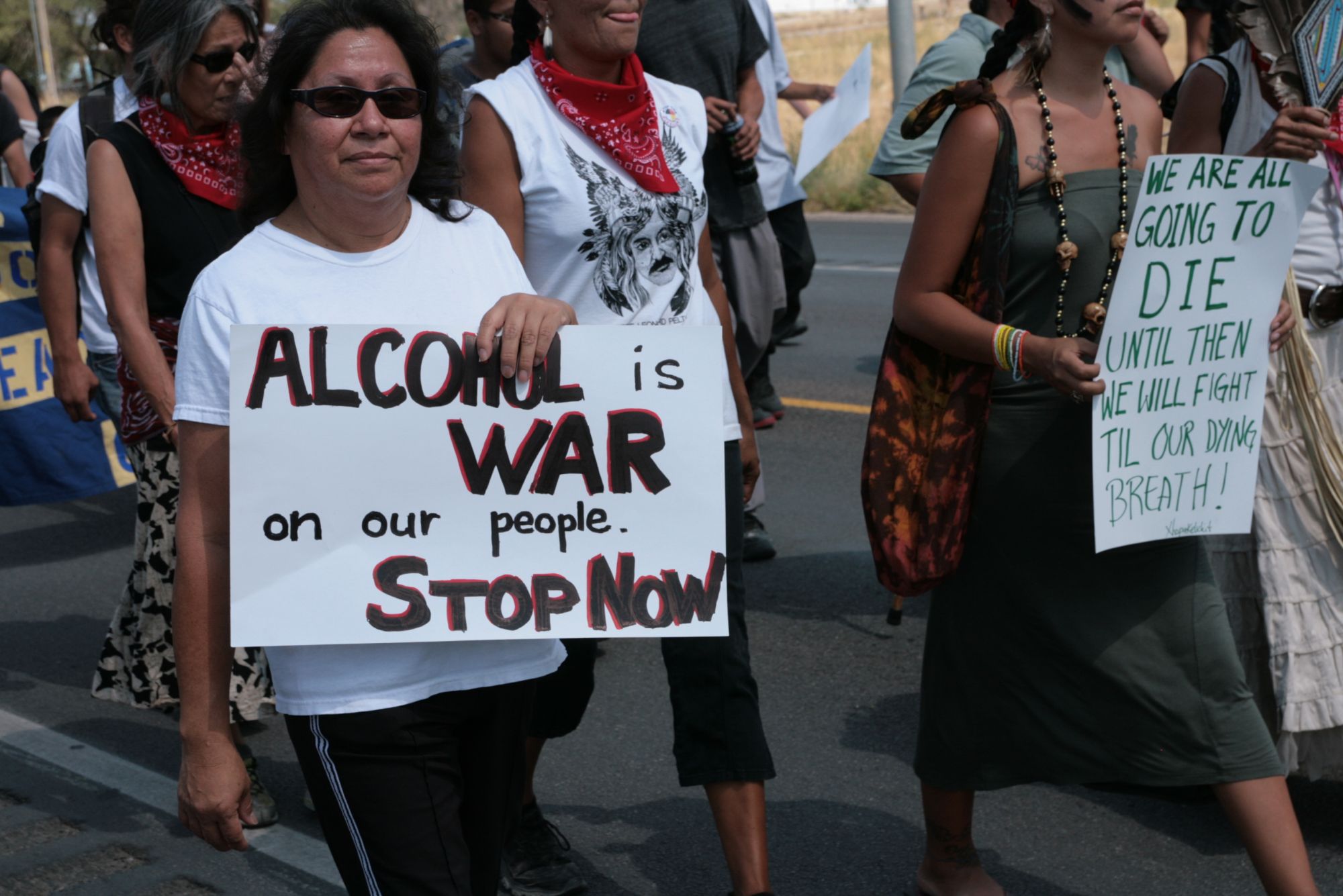
by Deep Green Resistance News Service | Aug 26, 2012 | Colonialism & Conquest, Indigenous Autonomy, Obstruction & Occupation
Whiteclay is an unincorporated village with a population of 14 people in northwest Nebraska. The town sits on the border of the Pine Ridge Indian Reservation, home to the Oglala Lakota (also known as the Oglala Sioux Tribe).
Whiteclay lies on disputed land, merely 200 feet from the official reservation border and less than 3 miles from the center of Pine Ridge, South Dakota, the largest town on the reservation.
Sale and possession of alcoholic beverages on the Pine Ridge is prohibited under tribal law. Except for a brief experiment with on-reservation liquor sales in the early 1970s, this prohibition has been in effect since the reservation lands were created.
Whiteclay has four off-sale beer stores licensed by the State of Nebraska which sell the equivalent of 4.5 million 12-ounce cans of beer annually (12,500 cans per day), mostly to the Oglalas living on Pine Ridge. These retailers routinely violate Nebraska liquor law by selling beer to minors and intoxicated persons, knowingly selling to bootleggers who resell the beer on the reservation, permitting on-premise consumption of beer in violation of restrictions placed on off-sale-only licenses, and exchanging beer for sexual favors. The vast majority of those who purchase beer in Whiteclay have in fact no legal place to consume it, since possession and consumption of alcoholic beverages on the Pine Ridge Reservation remain illegal under tribal law. Many people have died in the streets due to exposure, as the state of Nebraska fails to uphold state law or police Whiteclay. As long as the liquor stores in Whiteclay remains in business, the genocide of the Oglala Lakota people will continue.
Tribal activists of the Strong Heart Warrior Society have conducted annual blockades since 1999, trying to intercept alcohol and drugs being brought into the reservation. In June 2006 tribal activists protested beer sales by blockading the road from Pine Ridge to Whiteclay and confiscating beer bought in Whiteclay. These activists hoped to prevent bootlegging and illegal sales on the reservation. On June 9th of this year, young Lakota activists and their non-native allies held a blockade of the highway leading into Whiteclay, and gained concessions from law enforcement.
In solidarity with the Oglala Lakota people, members of Deep Green Resistance are assisting an action now to shut down the bars in Whiteclay forever.
Updates on action:
Sun. August 26, 2012 (All times MDT)
As of 10:00 PM: Police and firefighters unable to unlock the blockaders once at the jail. The five released without bail after agreeing to unlock themselves.
7:59 PM: Tribal police have come into Nebraska to block support to the folks on lockdown. Nebraska State Patrol has brought in a trailer and carried the lockdown, as a unit, onto the trailer (one person may have sustained injuries due to this police maneuver). They are now being transported to the jail. They are still locked together. Stay tuned for updates on the protestors’ status and information on how to help!
6:22 PM: Police are bringing in a livestock trailer to attempt to move the blockade as a unit to a different location. They have threatened the blockaders with felony charges. Blockaders have decided to hold their ground. This is what resistance looks like.
5:30 PM: Police have threatened to arrest another protester.
4:20 PM: There’s a line of cops, a line of warriors, and a line of blockaders. There’s a huge banner that says “Honor the Treaties”. Lakota people are chanting and drumming.
4:00 PM: All four bars in Whiteclay have been shut down. Two arrests have been made. Police have issued an ultimatum that all those locked down in Whiteclay must walk back to the reservation or they will be arrested.
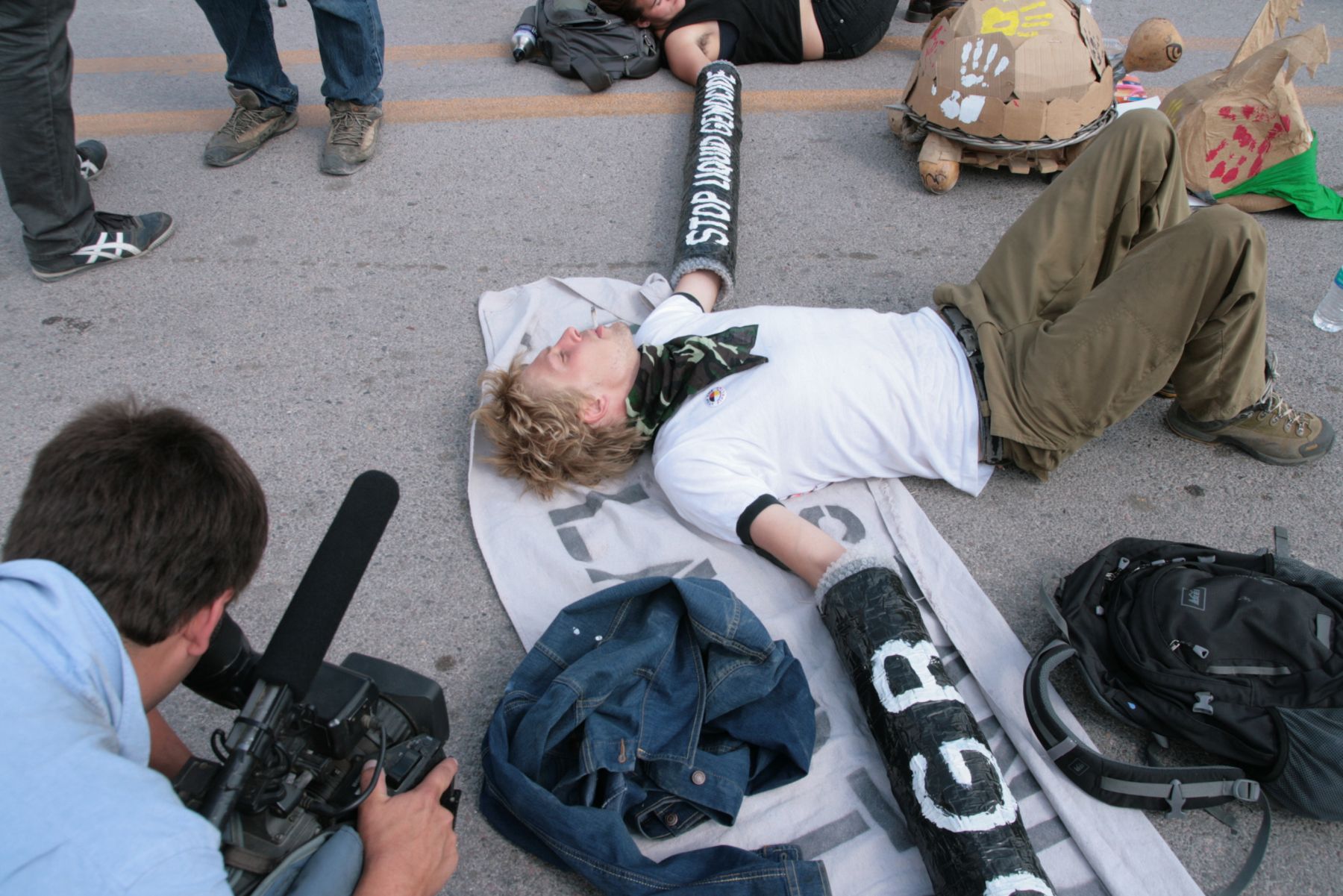
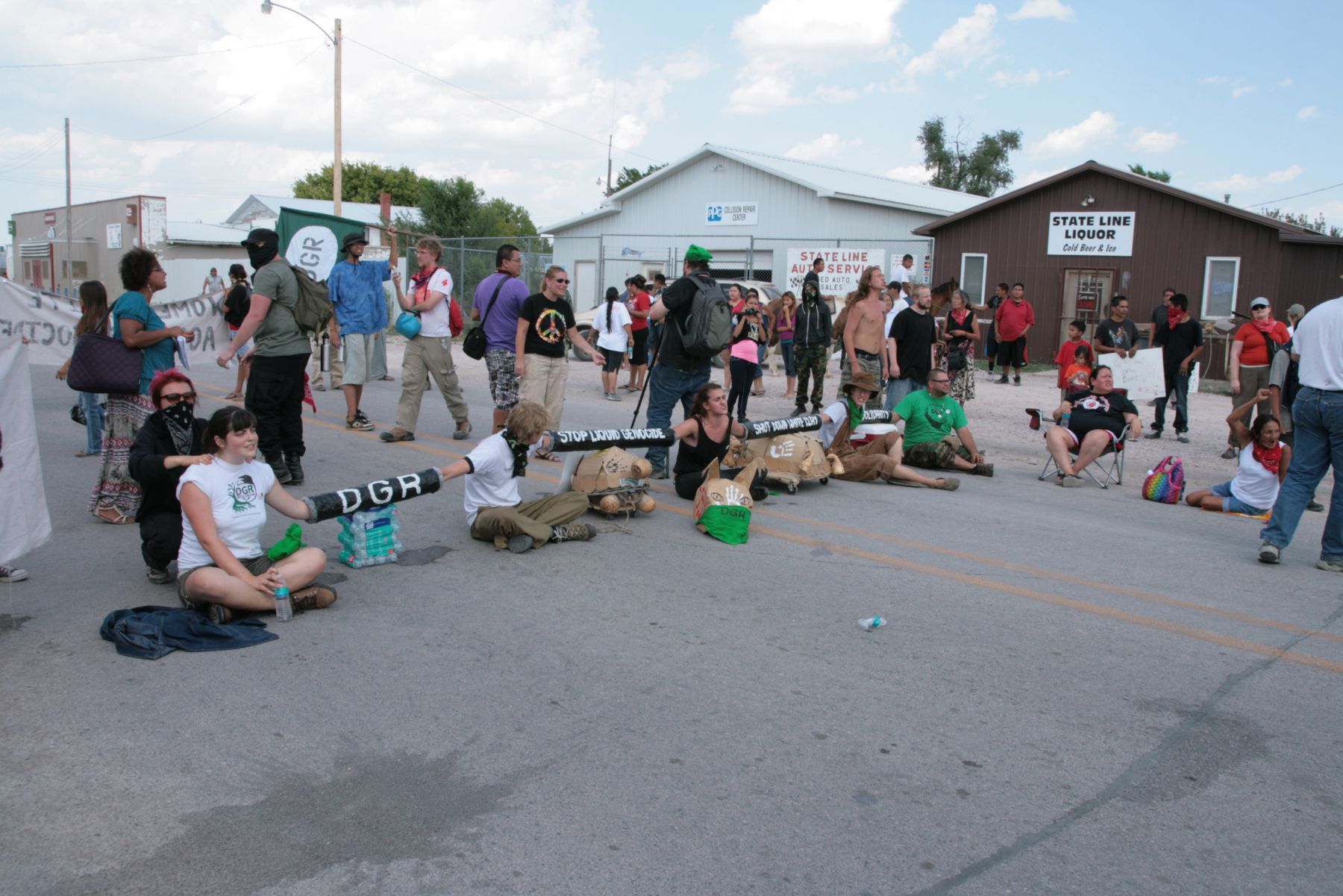

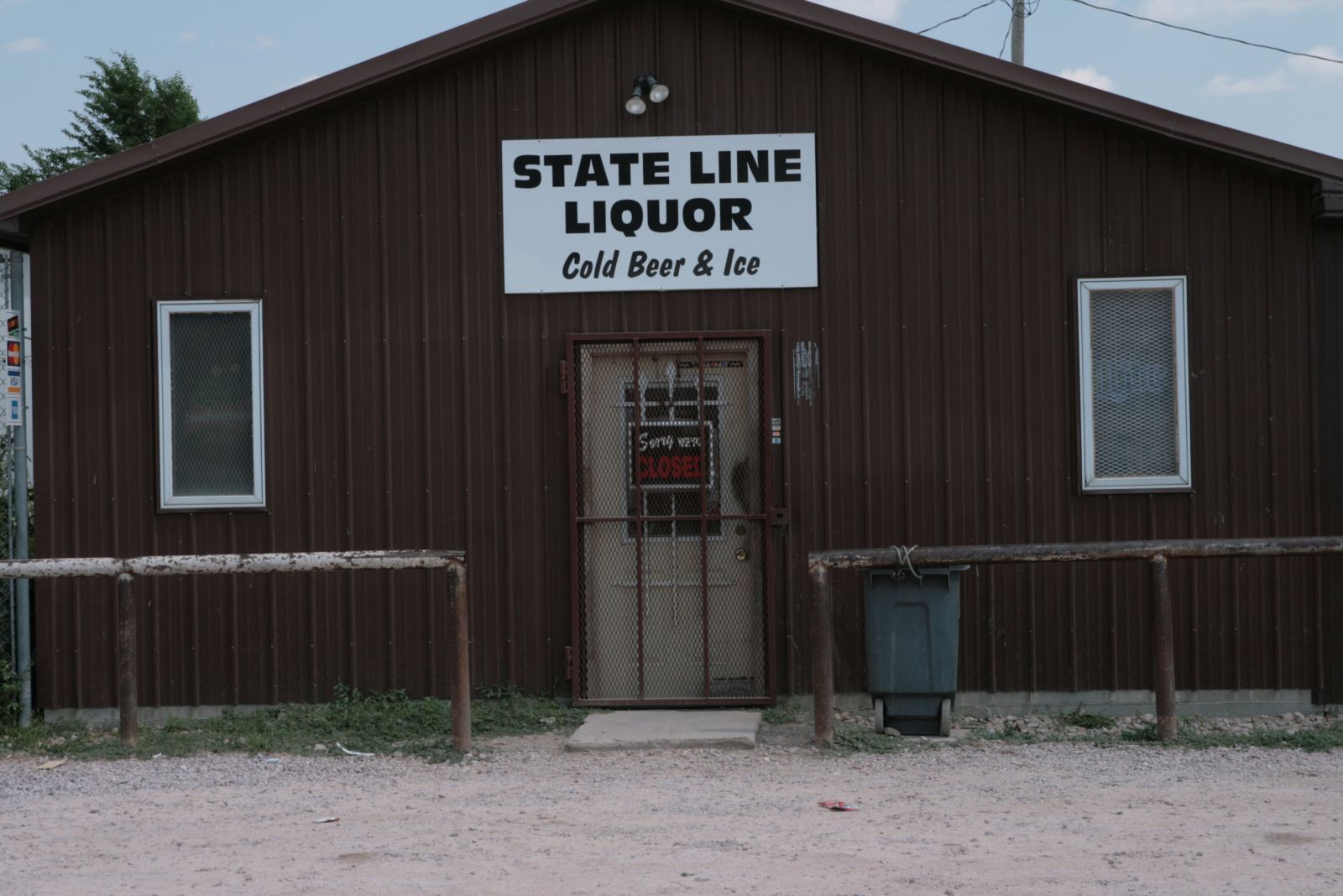
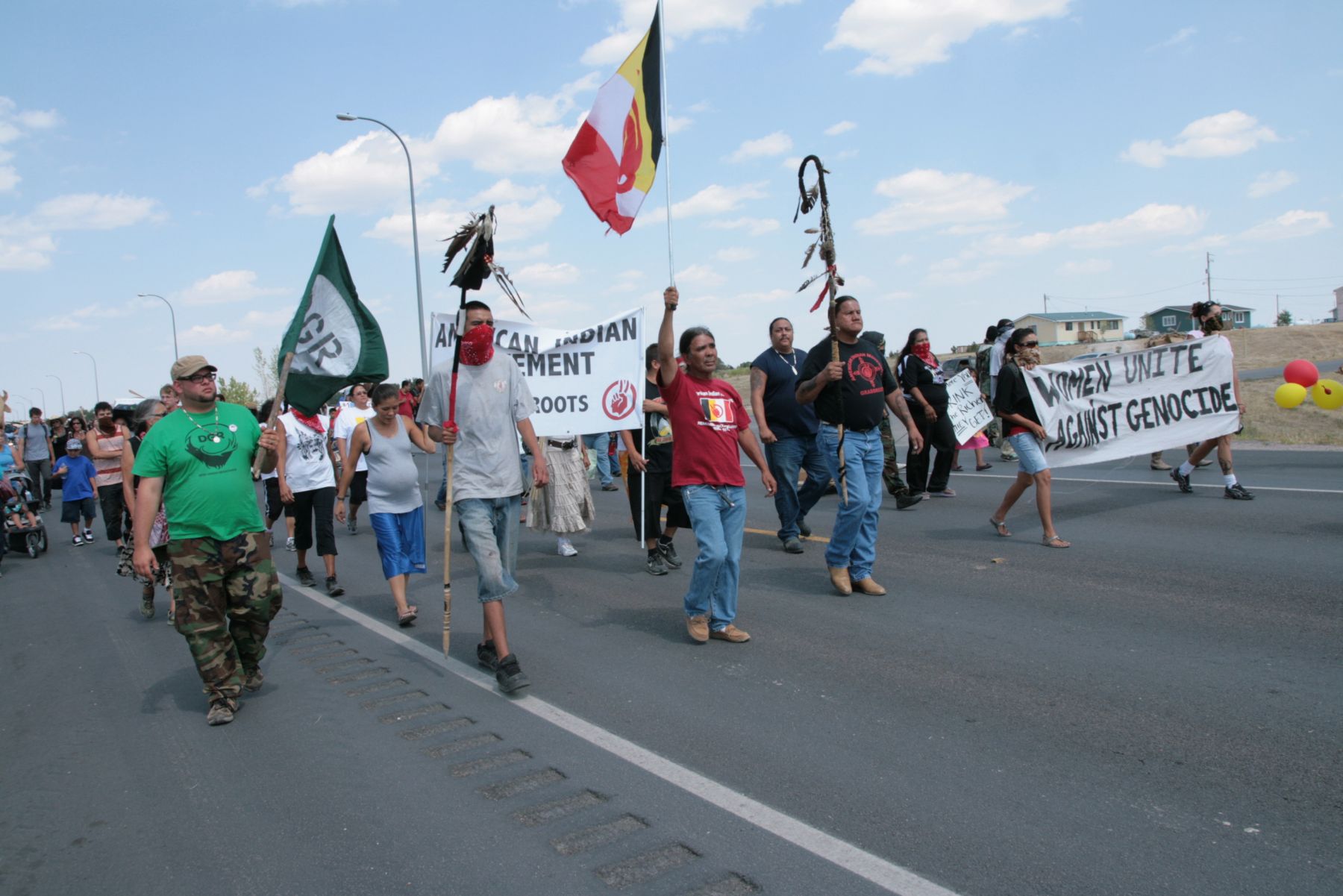
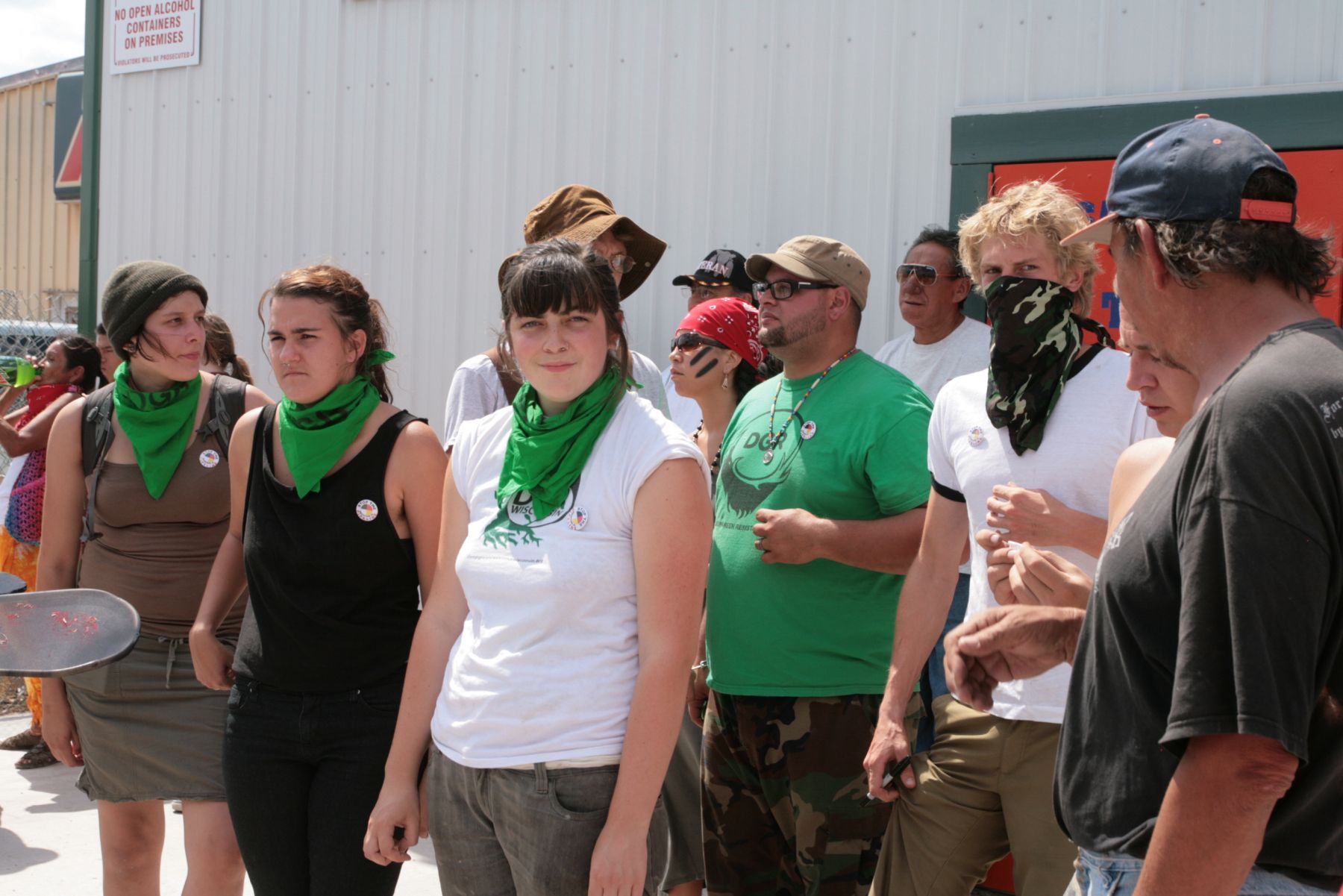
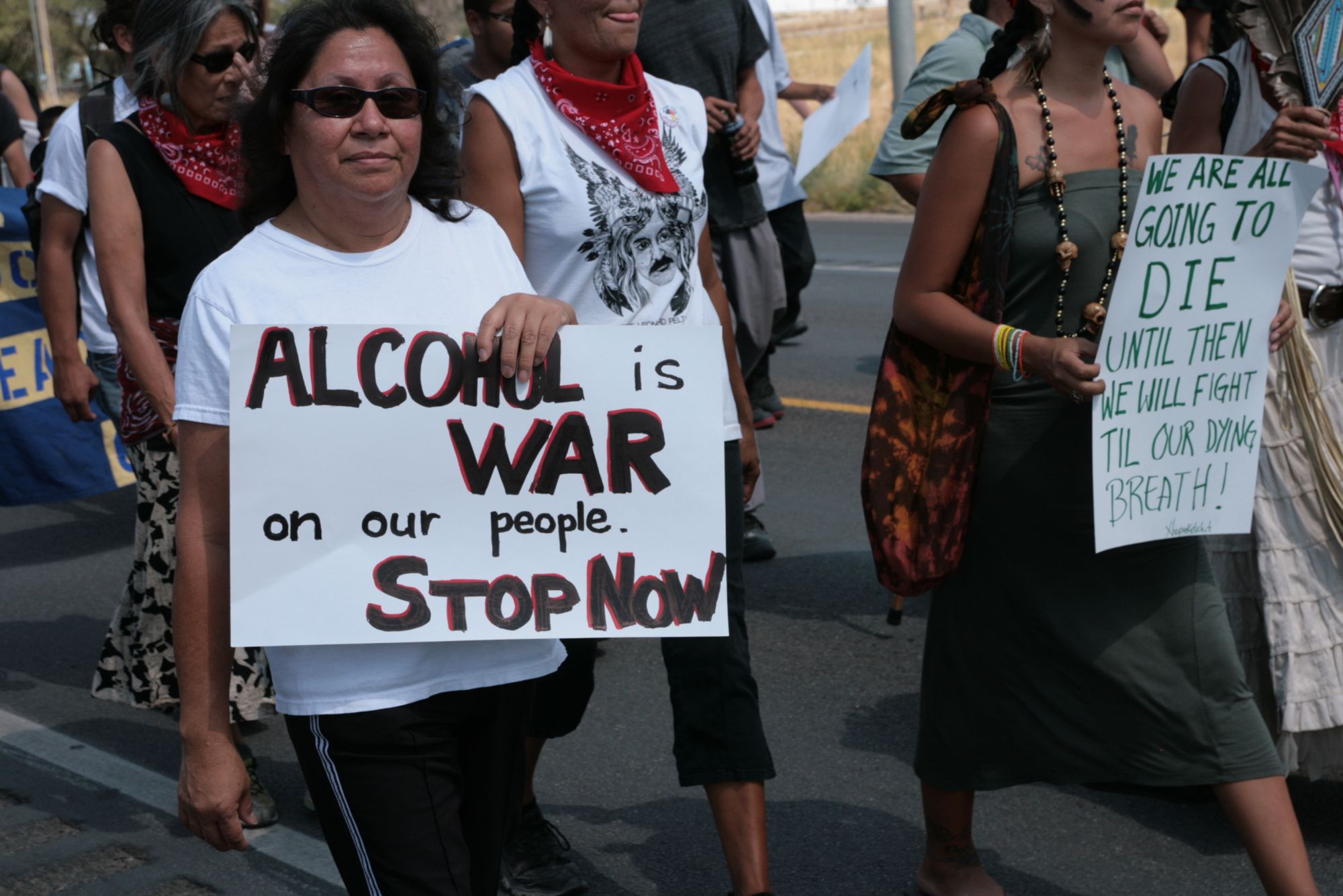
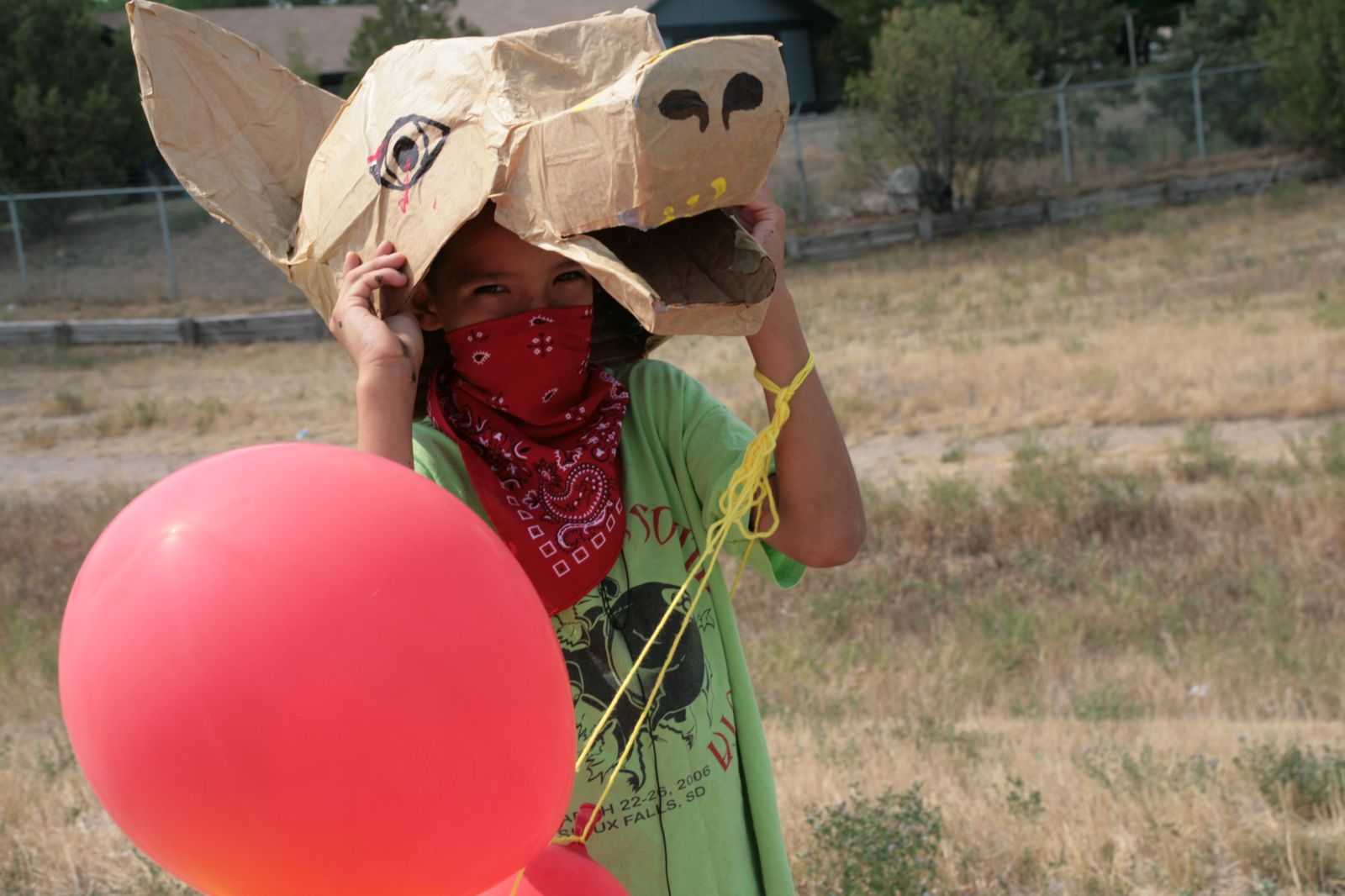
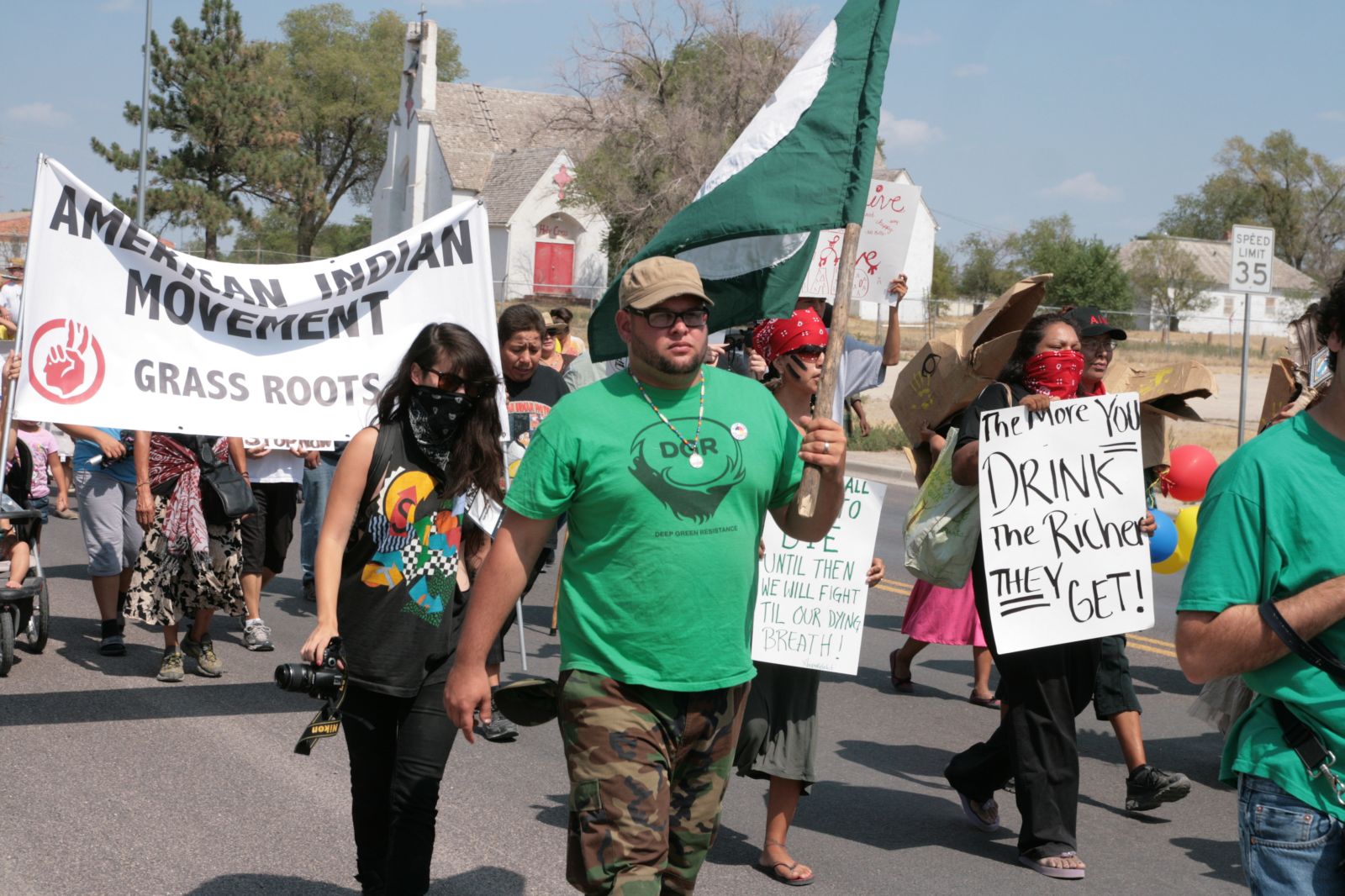
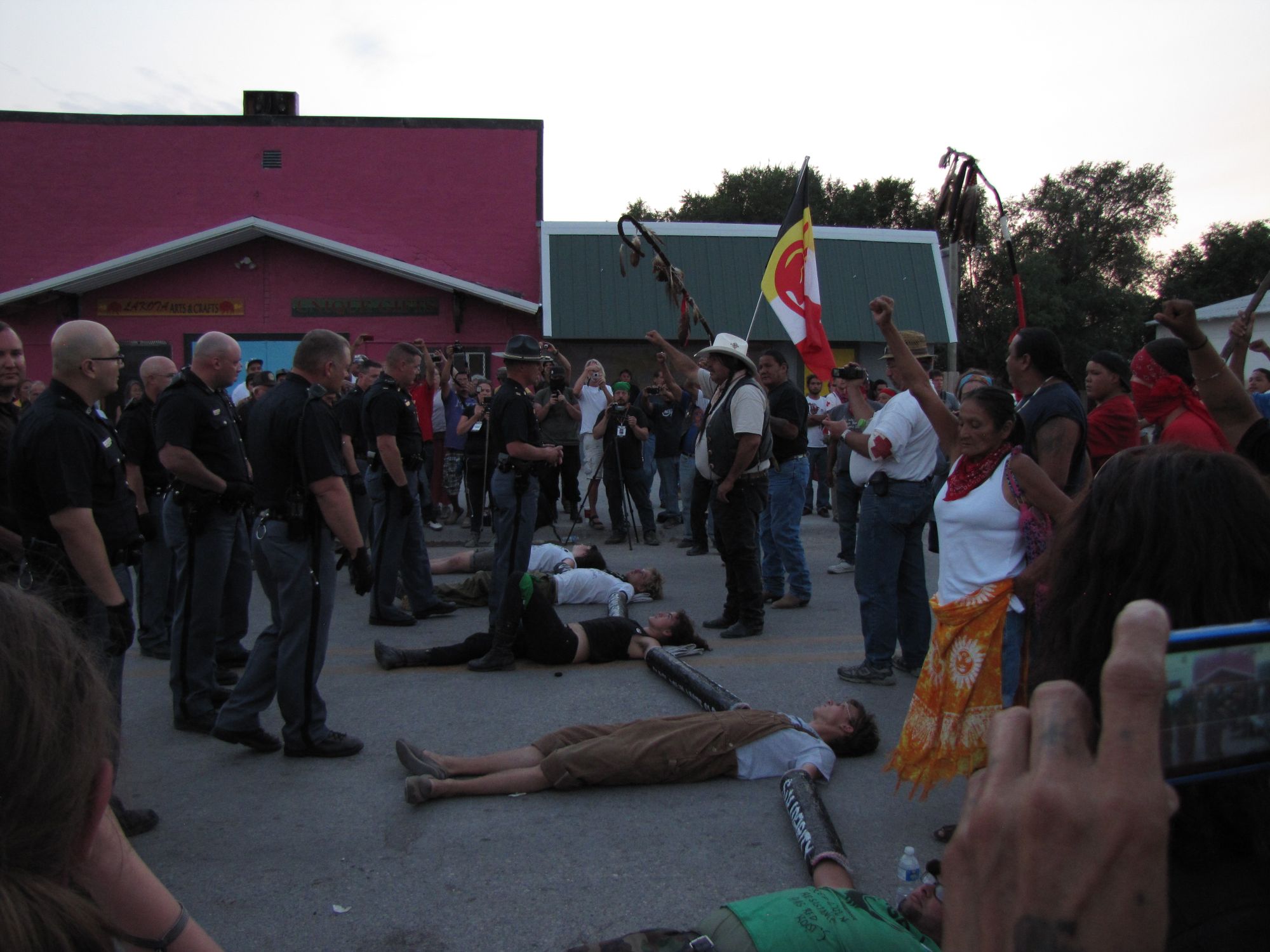

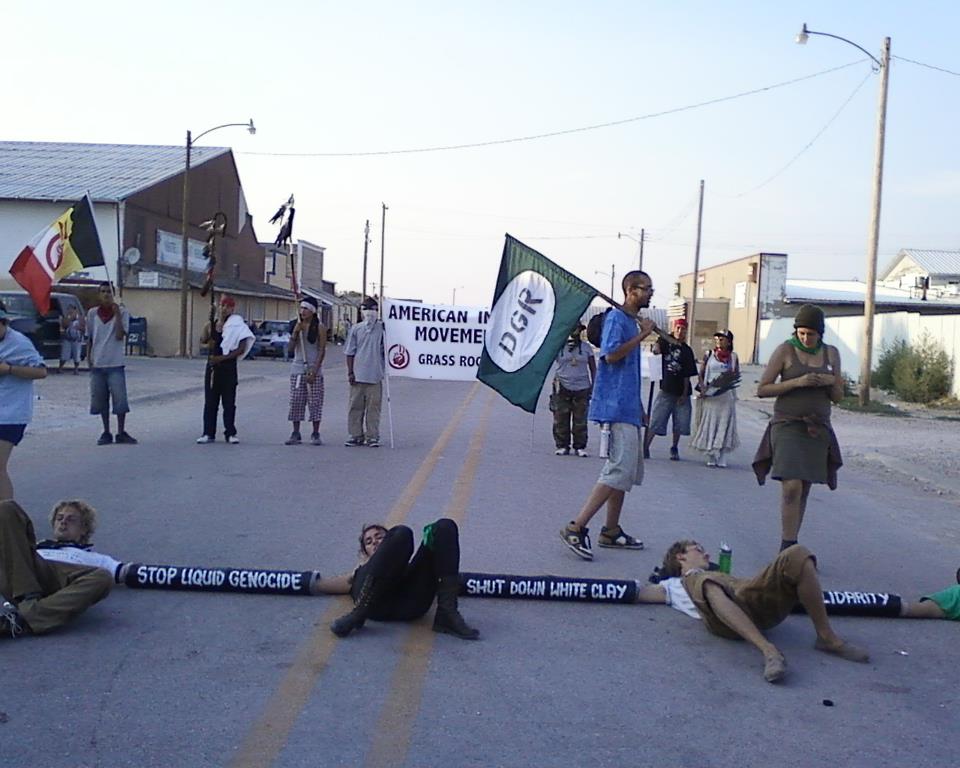
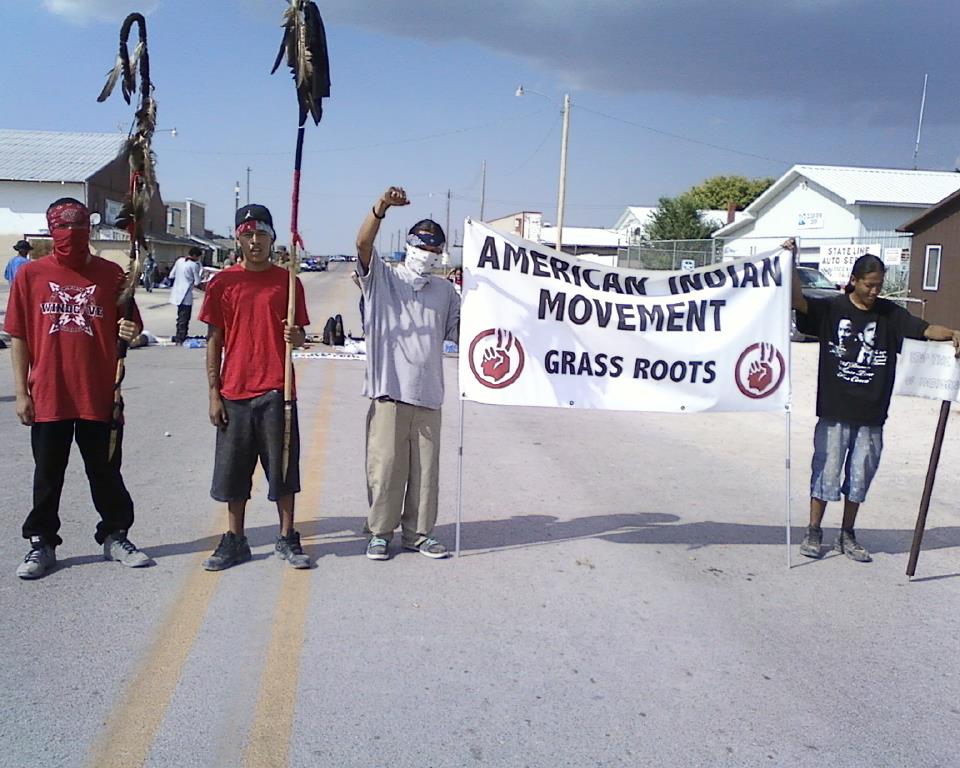
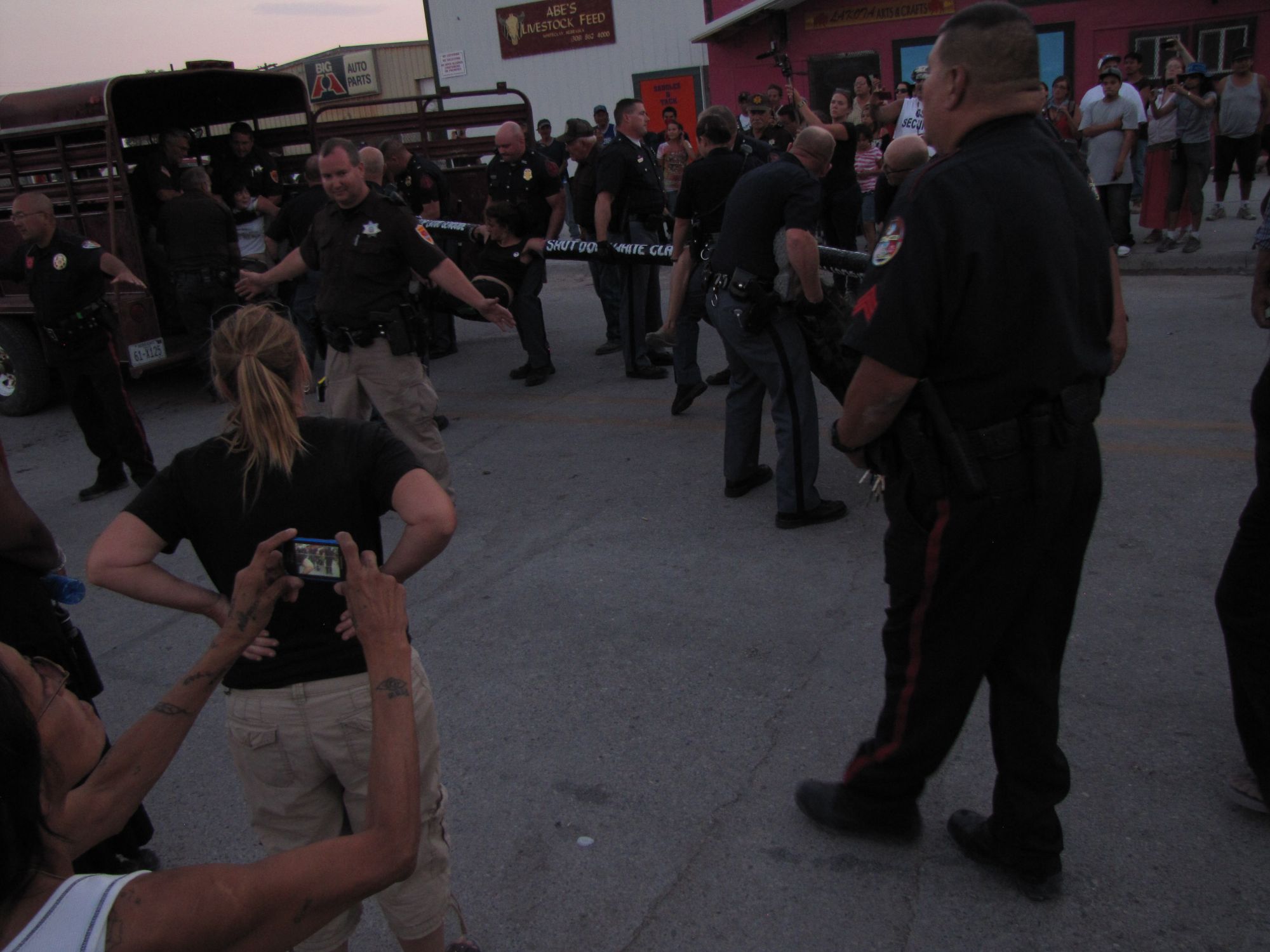
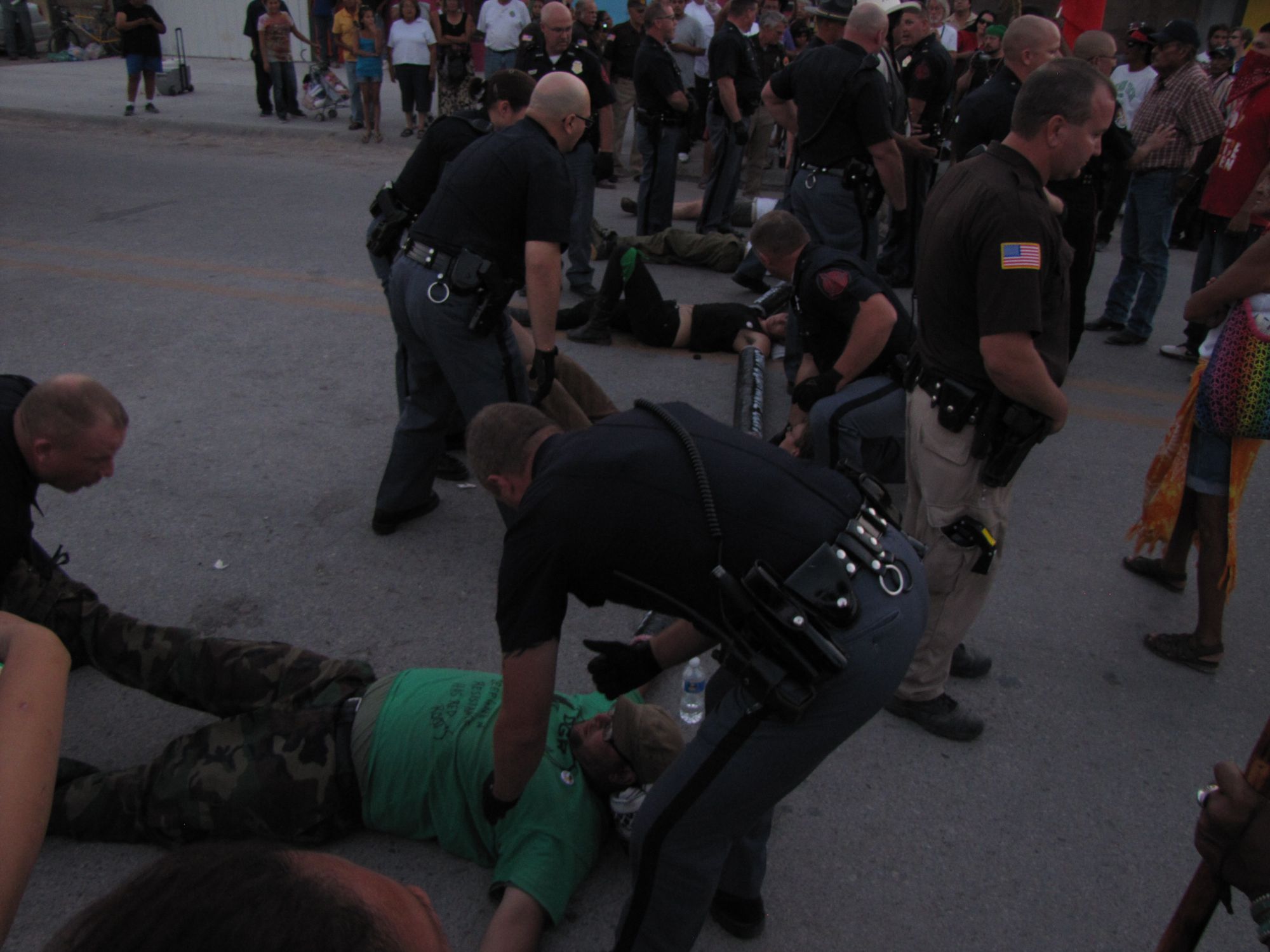



by Deep Green Resistance News Service | May 5, 2012 | Colonialism & Conquest, Indigenous Autonomy, White Supremacy
By Chris McGreal / The Guardian
A United Nations investigator probing discrimination against Native Americans has called on the US government to return some of the land stolen from Indian tribes as a step toward combatting continuing and systemic racial discrimination.
James Anaya, the UN special rapporteur on the rights of indigenous peoples, said no member of the US Congress would meet him as he investigated the part played by the government in the considerable difficulties faced by Indian tribes.
Anaya said that in nearly two weeks of visiting Indian reservations, indigenous communities in Alaska and Hawaii, and Native Americans now living in cities, he encountered people who suffered a history of dispossession of their lands and resources, the breakdown of their societies and “numerous instances of outright brutality, all grounded on racial discrimination”.
“It’s a racial discrimination that they feel is both systemic and also specific instances of ongoing discrimination that is felt at the individual level,” he said.
Anaya said racism extended from the broad relationship between federal or state governments and tribes down to local issues such as education.
“For example, with the treatment of children in schools both by their peers and by teachers as well as the educational system itself; the way native Americans and indigenous peoples are reflected in the school curriculum and teaching,” he said.
“And discrimination in the sense of the invisibility of Native Americans in the country overall that often is reflected in the popular media. The idea that is often projected through the mainstream media and among public figures that indigenous peoples are either gone or as a group are insignificant or that they’re out to get benefits in terms of handouts, or their communities and cultures are reduced to casinos, which are just flatly wrong.”
Close to a million people live on the US’s 310 Native American reservations. Some tribes have done well from a boom in casinos on reservations but most have not.
Anaya visited an Oglala Sioux reservation where the per capita income is around $7,000 a year, less than one-sixth of the national average, and life expectancy is about 50 years.
The two Sioux reservations in South Dakota – Rosebud and Pine Ridge – have some of the country’s poorest living conditions, including mass unemployment and the highest suicide rate in the western hemisphere with an epidemic of teenagers killing themselves.
“You can see they’re in a somewhat precarious situation in terms of their basic existence and the stability of their communities given that precarious land tenure situation. It’s not like they have large fisheries as a resource base to sustain them. In basic economic terms it’s a very difficult situation. You have upwards of 70% unemployment on the reservation and all kinds of social ills accompanying that. Very tough conditions,” he said.
Anaya said Rosebud is an example where returning land taken by the US government could improve a tribe’s fortunes as well as contribute to a “process of reconciliation”.
“At Rosebud, that’s a situation where indigenous people have seen over time encroachment on to their land and they’ve lost vast territories and there have been clear instances of broken treaty promises. It’s undisputed that the Black Hills was guaranteed them by treaty and that treaty was just outright violated by the United States in the 1900s. That has been recognised by the United States supreme court,” he said.
Anaya said he would reserve detailed recommendations on a plan for land restoration until he presents his final report to the UN human rights council in September.
“I’m talking about restoring to indigenous peoples what obviously they’re entitled to and they have a legitimate claim to in a way that is not divisive but restorative. That’s the idea behind reconciliation,” he said.
But any such proposal is likely to meet stiff resistance in Congress similar to that which has previously greeted calls for the US government to pay reparations for slavery to African-American communities.
Read more from The Guardian: http://www.guardian.co.uk/world/2012/may/04/us-stolen-land-indian-tribes-un
by Deep Green Resistance News Service | Apr 3, 2012 | Indigenous Autonomy, Mining & Drilling, Protests & Symbolic Acts
By Rocky Kistner / Natural Resources Defense Council
In the Dakotas, members of the proud Lakota Nation rose in protest this week to join a 48-hour hunger strike in opposition to the Keystone XL pipeline—and all tar sands pipelines—they say will destroy precious water resources and ancestral lands in the U.S and in Canada.
On Sunday, dozens of hunger strikers and supporters marched at a rally against tar sands oil mining operations and pipelines in Eagle Butte, S.D., an impoverished community on the Cheyenne River Indian Reservation, close to TransCanada’s 1,700 mile proposed Keystone XL pipeline route to refineries in the Gulf.
Lakota tribal members and their children drove to a camp in the rugged hills near the Missouri River to fast in solidarity with a hunger strike at the Bella Bella Community School in British Columbia. Children at the school are protesting a plan to ship millions of barrels of oil through a potentially dangerous “Northern Gateway” pipeline that would pipe corrosive tar sands oil from Alberta to giant super tankers navigating Canada’s treacherous Pacific coast.
The massive environmental devastation caused by tar sands mining in Canada and oil company plans to ship it through the U.S. has united Native Americans against proposals to build tar sands pipelines here in the U.S. Here’s how veteran Lakota activist Debra White Plume described it at hunger strike near Eagle Butte:
“This pipeline is about rich people getting richer, this pipeline is about raping Mother Earth and feeding the machine. For us this pipeline is genocide for us and the First Nations people in Canada. I think our native nations will stay opposed to the Keystone XL pipeline and stay opposed to other pipelines that come through here because we understand that water is a gift from our Grandfather, it’s a gift of life. Our leaders understand that and they’re not going to make a deal. It’s a battle for our water, it’s a battle for our children. These are our grandchildren at the hunger strike, we’re really proud of them for going hungry for Mother Earth and for their elders who are doing this.”
Karen Ducheneaux, who lives on the Cheyenne River Indian Reservation, one of the poorest regions in the country, came up with the hunger strike idea after seeing a powerful video protesting tar sands oil by the children of the Bella Bella Community School in Canada. After talking to her family members and tribal leaders, Ducheneaux decided it was time to act in solidarity with the First Nation peoples of Canada.
“What they’re facing doesn’t just affect them, doesn’t just affect the west coast of Canada or Alberta where the tar sands are. It doesn’t just affect people along the where the pipelines are, it affects the whole world. What they’re doing, poisoning the water and polluting the earth affects all mankind, not just the Lakota or people of South Dakota, but everyone….I’m so proud of the group of school children in Bella Bella and so proud to be able to support them….we can’t drink oil, we’re going to destroy our own ground water and our own ecosystem and then we’re going to be stuck with nothing.”
So on an unusually hot April 1st in the Dakotas, a few dozen hunger-strikers and supporters gathered on family-owned land nestled in the rumpled hills near the Missouri River, land that has been a source of life and nourishment long before settlers invaded their Lakota Sioux territories more than a century ago. Lakota supporters built a sweat lodge and elders sang songs and prayers in support of hunger strikers in Canada over a thousand miles away. They were there to support and protect Mother Earth, a powerful Lakota tradition passed down through the generations, long before oil and mining companies came and polluted their land.
It is a tradition these hunger strikers say they will fight for until there are no Lakota left, a struggle we all should respect and support.
From EcoWatch
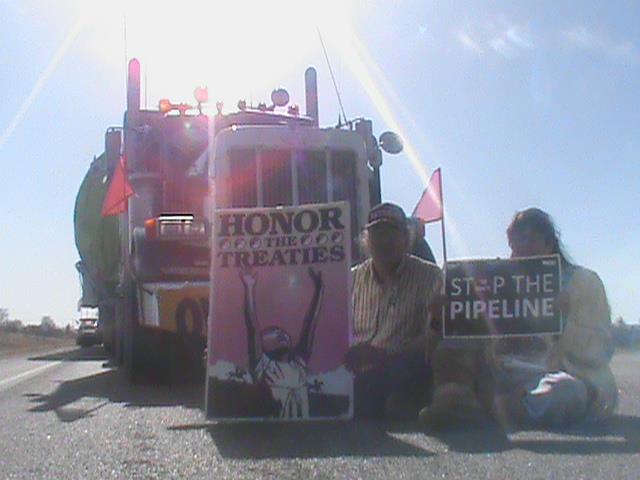
by Deep Green Resistance News Service | Mar 7, 2012 | Indigenous Autonomy, Obstruction & Occupation
By Chase Iron Eyes / Last Read Indians
March 5th, 2012, everyone had their ear to the new moccasin telegraph. Social networks, telephones, and word of mouth networks were abuzz with reports of Oglala Lakota Nationals preventing oil pipeline materials, destined for Canadian Tar sands and/or Keystone XL infrastructure locales or some unknown destination, from being transported across the Pine Ridge Reservation’s Treaty territory. Information travelled to Debra and Alex White Plume (Owe Aku, Inc. “Bring Back the Way) and Olowan Martinez that semi-trucks loaded with enormous oil pipeline components were set to cross Oglala territory sometime during the afternoon on March 5th, 2012; “We did not know where the equipment was going, but we knew that these trucks were too huge, too heavy, and too dangerous to pass our roads. We thought the equipment may be going to the Tarsands oil mine, or other oil mines in Canada,” Debra White Plume explained.
A call went out via digital media and other sources for all able bodied and willing participants to mobilize and report to Wanblee, South Dakota, for an impromptu gathering of scores of activists ready to block the road with their bodies to prevent semi-trucks and pipeline components from crossing Oglala Territory. Within minutes the confrontation happened as several State and Tribal police officers and other officials responded to the tense scene. Oglala Tribal police arrived immediately with one Sergeant telling the road-blockers that the South Dakota Highway Patrol was parked a few miles down the road at the border between Oglala Country and the State of South Dakota but that the SD Highway Patrol would not proceed onto the reservation. Notably, this Sergeant also advised those present that the FBI (Federal Bureau of Investigation) was en route to the reservation in two vans from Rapid City, SD. However, at the conclusion of the day there were no signs of such FBI presence.
The Texas semi-trucks, transporting 1.25 Million-dollar “Treater Vessels” used in oil, gas and element separation, were stopped in their tracks as they approached the human roadblock. The human roadblock that featured two Lakota grandmothers: Renabelle Bad Cob Standing Bear (in her wheelchair) and Marie Randal (in her 90s). The drivers were questioned by those forming the blockade as to why they were crossing Oglala lands. One of the drivers responded that they did not know they were crossing Indian land, only that they were following company directives regarding their assigned routes and that their Canadian Corporation had received this particular route information as a result of a partnership with the State of South Dakota, whose elected officials have always supported the Keystone XL pipeline. This information prompted Tom Poor Bear (Vice President of the Oglala Lakota Nation) to phone South Dakota State officials in Pierre, SD, inquiring as to the nature and origin of the route of the stopped truckers. South Dakota affirmed to Oglala Vice President Tom Poor Bear that indeed the State was involved with planning such route, ostensibly without consulting the Oglala Lakota Nation. The heavy-hauling trucks were allegedly cutting through Oglala country in attempts to avoid a $50,000.00 per-truck-fee to pass through using State of South Dakota roadways.
Read more from Last Real Indians





















